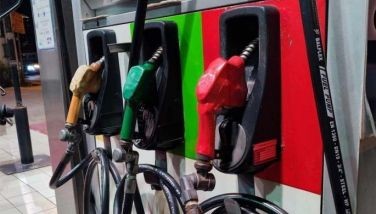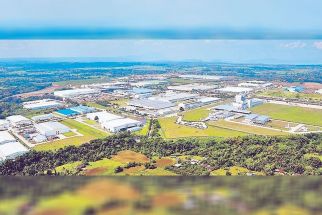The long wait

After a very, very long wait, our coconut farmers have finally seen a glimmer of hope for a better future ahead with the passage into law of the Coconut Farmers and Industry Trust Fund Act or Republic Act 11524.
RA 11524 aims to develop the Philippine coconut industry using recovered coco levy assets, which were declared state-owned by the Supreme Court less than a decade ago.
The new law mandates the Philippine Coconut Authority (PCA) to craft the Coconut Farmers and Industry Development Plan that will set the directions and policies for the development and rehabilitation of the industry within 50 years. The plan aims to increase farm productivity and farmers’ income, alleviate poverty, create social equity, and rehabilitate and modernize the coconut industry. It likewise incorporates a national program intended for community-based enterprises, coco farmers organizations, innovate research projects, as well as integrated processing of coconut and downstream products.
The law mandates the Bureau of Treasury to infuse P10 billion into the trust fund on the first year of its implementation, another P10 billion on the second year, P15 billion on the third year, P15 billion on the fourth, and P25 billion on the fifth year.
It will be recalled that the government generated the coco levy funds from coconut farmers beginning in 1971 through levies, charges, and other fees imposed on the sale of copra. The fund was also collected from coco millers, refiners, processors, exporters and copra end-users.
In 2012, the SC ruled that the coco levy funds were publicly owned, but it took almost another decade before a decision could be reached on how to best utilize the funds to benefit farmers.
A Trust Fund Management Committee is tasked to set the funds’s investment strategy. It will be composed of representatives from the Departments of Finance, Budget and Management, and Justice.
What is included in the so-called coconut levy assets? According to the law, these include among others, the shares of stock in the United Coconut Planters Bank (UCPB) that were determined to be owned by the government, the CIIF Oil Mills Group (Southern Luzon Coconut Oil Mills, Cagayan de Oro Oil Co., Iligan Coconut Industries Inc., San Pablo Manufacturing Corp; Granexport Manufacturing Corp., and Legaspi Oil Co.), the CIIF Holding Companies consisting of 14 holding firms, and the converted San Miguel Corp. (SMC) Series 1 preferred shares (753.8 million shares declared owned by the government together with dividends).
Meanwhile, the coconut levy funds refers to various funds generated from levies, taxes, charges and other fees exacted or imposed pursuant to or in connection with the sale of copra rececada or its equivalent in other coconut products, and collected for the most part from coconut farmers, planters, millers, refiners, processors, exporters, dessicators, and other end-users.
The law also amended the composition of the Philippine Coconut Authority board, which will now include the secretaries of the Department of Agriculture as chairman, Department of Finance as vice chairperson, DBM, DOST, DTI, the administrator of the PCA, and three members from the coconut farmers sector from Luzon, Visayas, and Mindanao, who own not more than five hectares of coconut farm.
As mandated by the law, the Presidential Commission on Good Government has already submitted an accounting and inventory of the coco levy assets, as well as investments, disbursements, and expenditures from the coco levy funds.
As for the Coconut Farmers and Industry Trust Fund, the law provides that proceeds from the redemption of the converted SMC preferred shares and all income or interest derived therefrom, and any other cash coco levy assets held by the Bureau of Treasury, as well as cash held by UCPB as administrator of the CIIF, shall form part of the initial trust fund principal.
The trust funds will be augmented by funds coming from the Bureau of Treasury (P10 billion immediately) and proceeds of privatization or disposition of the coco levy assets which shall be sold within five years.
The coco levy funds and assets were the product of the blood, sweat, and tears of small coconut farmers, who were promised a viable coconut industry and a share of investments, only to learn later that many of the funds were used for personal profit by so-called Marcos cronies and invested in corporate assets and funds.
Coconut farmers in this country are among the poorest. While the Philippines is the world’s second largest producer and leading exporter of coconut products, small coconut farmers continue to suffer from very low farmgate prices for their produce, low productivity and yields, government programs and loans for the coconut industry turned ghost projects, among others.
The Federation of Free Farmers questioned the absence of coconut farmers in the composition of the Trust Fund Management Committee, considering that the funds came from levies or impositions on coconut farmers, thereby seriously marginalizing coconut farmers.
In a case decided by the Supreme Court in 2017, the Tribunal recalled that the coco levy funds all began on June 19, 1971 following the passage of RA 6260 for the purpose of providing the necessary funds for the development of the coconut industry. The imposition, pooled into what was called the Coconut Investment Fund, consisted of 55 centavos on the first domestic sale by a coconut farmer for every 100 kilos of copra or other coconut products. In exchange, the farmer was to be issued a receipt, which shall be converted into shares of stock of the Coconut Investment Company. Playing key roles in the collection, administration, and/or use of the coco levy funds were the PCA, formerly Philippine Coconut Administration (Philcoa), UCPB, and the Philippine Coconut Producers Federation Inc. (Cocofed).
The declaration of Martial Law in September 1972, according to the SC, saw the issuance of several PDs purportedly designed to improve the industry thru the collection and use of the coco levy funds.
Many of the coconut farmers whose labor paid for the funds are already dead, and died poor. Our yield of coconut trees in terms of oil is less than one ton per hectare per year, which is way below the potential of over four tons/ha/year. Our coconut industry competes with the oil palm industry of Malaysia, where the poverty incidence is at 3.5 percent compared to ours of over 25 percent, according to one study. Government policies, the same study mentioned, play a major role in making Philippine coconut farmers among the poorest of the poor farmers, and the Malaysian oil palm farmers among the richest farmers in the ASEAN.
It’s about time that our coconut farmers be liberated from this vicious cycle of poverty via a well-meaning government program, as well as policies that truly aim to improve agriculture in this country.
For comments, e-mail at [email protected]
- Latest
- Trending





























